By Francis Leclerc, Head Of Americas- Although revenues have jumped from the spike in trading activity, it’s been a tough environment for trading in recent years. Margins have been squeezed across the board to the extent that some major investment banks are completely withdrawing from certain asset classes upon discovering they are not making a profit. This stems from banks not having a holistic understanding of trading costs, which begs the question how the current climate is affecting operations. Now is the time to review costs and implement savings and a cloud-based model should be part of the strategy that gives them that much-needed boost.
Now is the time to review costs and implement savings and a cloud-based model should be part of the strategy that gives them that much-needed boost.
Trading is increasingly a rat race for the best software – gone are the days when trades were executed on noisy trading floors. It manages everything from analysis to execution and allows banks to squeeze all possible profit from trading, which, in today’s landscape, is more important than ever. However, as it stands, banks will usually install trading software and then manage it themselves. Although, this has been practical historically, now this presents several problems which are sometimes overlooked by firms.
The main problem is the convoluted infrastructure. For the most part, the software across the trading desks is not uniform and there are numerous applications being used across the bank. These siloed systems need constant support and maintenance, which can put a real strain on internal IT teams. Each piece of software will have its own intricacies for the team to understand, so it’s difficult for them to keep all these systems up and running always efficiently. It requires constant nurturing which comes at an operational cost that will be eating into the bank’s bottom line.
A third-party provider, on the other hand, will be able run software more efficiently because they will have a deeper understanding of the technical aspects of the software. After all, they are maintaining one software for numerous clients, as opposed to many. Even if banks have someone who can speak the relevant IT language, they will not know the technology as intimately. For example, it would take a bank’s internal team long time to resolve a technical problem, whereas the cloud provider will likely have come across the problem before and, therefore, know how to troubleshoot it.
And what about new features? Trading software is constantly evolving to keep pace with the competition. So, if all systems need to be updated independently, it’s no longer cost-effective for them to have teams implementing adjustments and upgrades on a case-by-case basis across the business. It will take them longer and cost more when a cloud technology can deploy an update across all systems at the flick of a switch. The scalability of cloud infrastructure means it can easily adapt to changing trading requirements, whether it be upgrades or fluctuations in volumes. It’s this agility that gives cloud an edge.
However, outside of the operational unburdening, there are other advantages which are often overlooked – one such factor is trade predictability. Banks want to know what level of trading they will be executing, and when. Cloud can help to monitor the latency, slippage and overall health of the platform, meaning it can provide the user with vital information about which areas need optimising and can provide warning about any potential technical constraints, like a pilot putting on the seatbelt sign before turbulence. It gives the user much more control.
As well as this, the software provider’s data centre is often at the same location to the stock exchange and this closer proximity means the order has less distance to travel, so the trader is likely to see an improvement in latency, just from this change in distance. Notably, speed is particularly important in high-frequency trading (HFT) and algo trading, which are often used in stock trading strategies and equities is proving to be one of the areas which is proving most difficult to remain profitable in. There are more effective ways of gaining connectivity with the exchange.
Another similar factor is security. Cyber threats are a major concern for all banks these days – just last month the UK’s FCA was caught up in a data breach controversy. Cyber threats are becoming more sophisticated and it’s a challenge for banks to sustain resilience. If a bank is hosting everything themselves, they are solely responsible for confidentiality of the data and must ensure that the data they are holding cannot be used by anyone. Security is, therefore, essential. It’s not the primary benefit of cloud but, as a direct result of adoption, the bank will have a stronger level of security for its trading technology because the cloud provider will have robust security as a fundamental part of their offering.
Overall, many institutions have begun outsourcing many complex back office technologies as they have realised that they cannot feasibly add value whilst providing it themselves. In the case of trading, banks will be absorbing unnecessary infrastructure and maintenance costs by managing the software themselves. Therefore, banks who are examining how they can make trading more profitable should consider a cloud approach; it could be a crucial part of the package for them to focus their energy on the assets they know they are good at.

